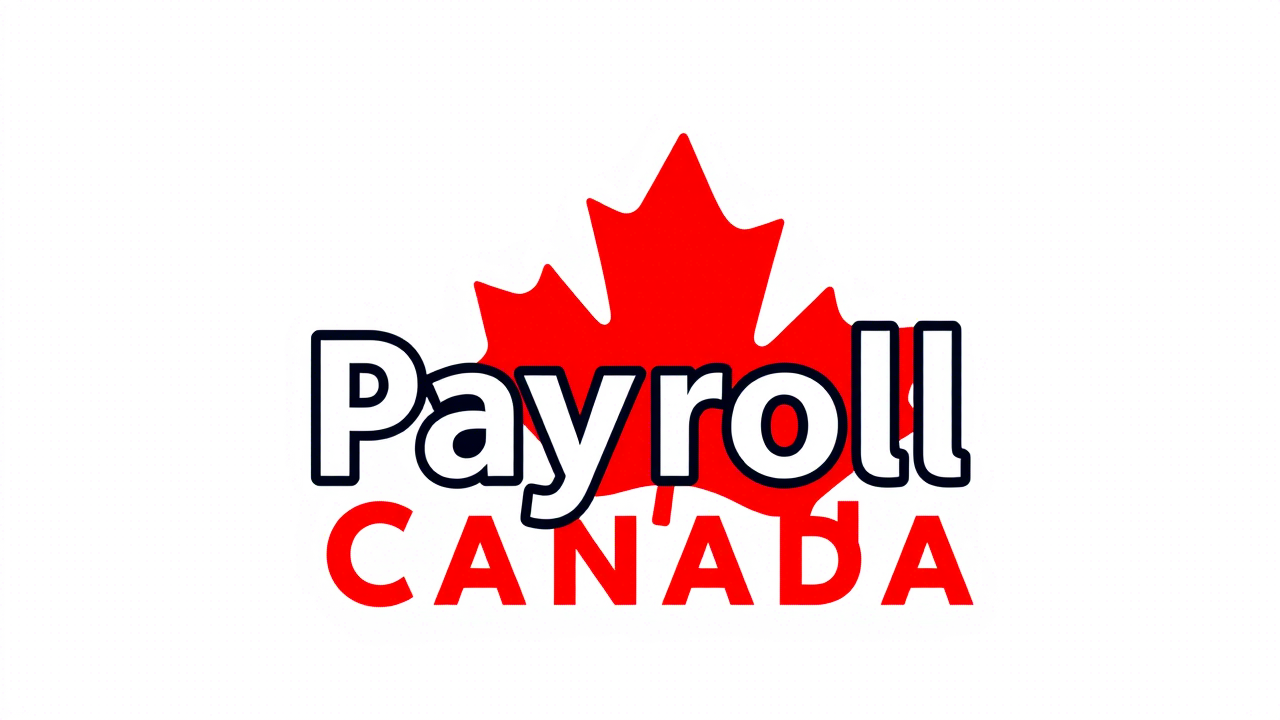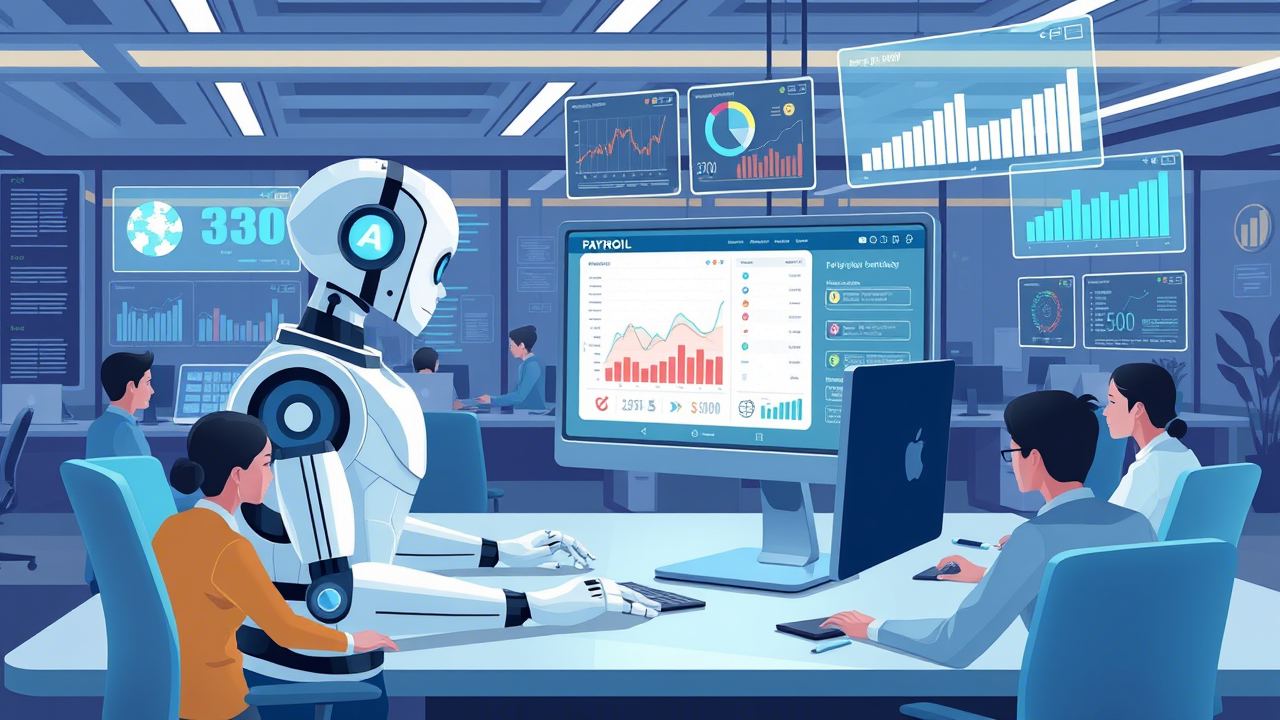The payroll landscape in Canada is undergoing a transformation, thanks to advancements in artificial intelligence (AI) and automation . These technologies are revolutionizing how businesses manage payroll, making processes faster, more accurate, and cost-effective. From automating repetitive tasks to providing predictive insights, AI and automation are reshaping the way Canadian businesses handle payroll compliance, employee payments, and reporting. In this article, we’ll explore the role of AI and automation in modern payroll systems and how they benefit businesses across industries.
Why AI and Automation Are Transforming Payroll
Payroll processing has traditionally been time-consuming and prone to human error. Tasks like calculating deductions, remitting taxes, and generating reports require precision and attention to detail. However, with the rise of AI and automation, these processes can now be streamlined, reducing the burden on HR and payroll teams.
In Canada, where compliance with the Canada Revenue Agency (CRA) and provincial labor laws is mandatory, AI-driven payroll systems ensure accuracy and eliminate costly mistakes. Businesses can also save time by automating routine tasks, allowing them to focus on strategic initiatives that drive growth.
Key Benefits of AI and Automation in Payroll
1. Enhanced Accuracy
AI-powered payroll systems minimize errors by automating calculations for taxes, Canada Pension Plan (CPP) contributions, and Employment Insurance (EI) premiums. This ensures employees are paid accurately and on time, while avoiding penalties for incorrect remittances.
For example, platforms like VTAC Payroll Management use AI algorithms to cross-check data and flag discrepancies before payroll is processed.
2. Improved Compliance
Canadian payroll regulations are complex and constantly evolving. AI and automation help businesses stay compliant by:
- Automatically updating tax rates and contribution percentages based on CRA guidelines.
- Adjusting calculations to reflect changes in provincial labor laws, such as minimum wage increases or overtime rules.
- Generating required reports, such as T4 slips, with minimal manual input.
This reduces the risk of non-compliance and audits, which can result in hefty fines.
3. Time and Cost Savings
Automation eliminates the need for manual data entry and repetitive tasks, freeing up HR and payroll staff to focus on higher-value activities. For small businesses, this means fewer resources spent on payroll administration and more time dedicated to core operations.
AI-driven tools also reduce the likelihood of errors, which can save businesses money by avoiding penalties and rework.
4. Real-Time Insights and Predictive Analytics
AI-powered payroll systems provide real-time insights into payroll expenses, helping businesses make informed decisions. For example:
- Predictive analytics can forecast future payroll costs based on hiring trends or seasonal fluctuations.
- Dashboards display key metrics, such as total payroll expenses, overtime hours, and benefit costs, at a glance.
These insights enable better financial planning and resource allocation.
5. Employee Self-Service Portals
Automation extends beyond payroll processing to include employee-facing features. Many modern payroll systems offer self-service portals powered by AI, allowing employees to:
- Access pay stubs and tax forms online.
- Update personal information, such as banking details or TD1 forms.
- Submit time-off requests or view vacation balances.
This reduces administrative work for HR teams and improves employee satisfaction by providing instant access to important information.
How AI and Automation Simplify Key Payroll Tasks
1. Tax Calculations and Remittances
AI algorithms automatically calculate federal and provincial income taxes, CPP contributions, and EI premiums based on the latest CRA rates. Automated remittance features ensure payments are submitted on time, eliminating the risk of missed deadlines.
2. Time and Attendance Tracking
AI-powered time-tracking tools integrate with payroll systems to capture hours worked, overtime, and breaks. These tools use machine learning to detect anomalies, such as duplicate entries or unusual patterns, ensuring accurate payroll data.
3. Year-End Reporting
Generating T4 slips and summaries can be a tedious task, but AI simplifies the process by pulling data directly from payroll records. Automated systems also verify the accuracy of T4 slips before submission to the CRA.
4. Handling Complex Pay Structures
For businesses with multiple pay rates, shift premiums, or union agreements, AI-driven payroll systems can handle complex calculations effortlessly. This is particularly beneficial for industries like construction, hospitality, and manufacturing.
Real-World Applications of AI in Canadian Payroll
Case Study 1: Streamlining Payroll for Small Businesses
A small retail business in Ontario implemented VTAC Payroll Management to automate its payroll processes. By leveraging AI for tax calculations and remittances, the business reduced payroll processing time by 50% and eliminated errors that had previously led to CRA penalties.
Case Study 2: Enhancing Compliance for Multi-Provincial Operations
A construction company operating in British Columbia and Alberta used an AI-powered payroll system to adjust calculations based on provincial labor laws. The system automatically updated minimum wage rates and overtime rules, ensuring compliance across both provinces without manual intervention.
Challenges of Adopting AI and Automation in Payroll
While AI and automation offer numerous benefits, businesses may face challenges during implementation:
1. Initial Setup Costs
Investing in AI-driven payroll systems can be expensive upfront, especially for small businesses. However, the long-term savings and efficiency gains often outweigh the initial investment.
2. Data Security Concerns
With sensitive employee data being processed by AI systems, businesses must ensure robust cybersecurity measures are in place to protect against breaches.
3. Learning Curve
Employees may need training to adapt to new technologies. Choosing user-friendly platforms like VTAC Payroll Management can ease the transition.
The Future of AI in Canadian Payroll Systems
As AI technology continues to evolve, its role in payroll systems will expand further. Future advancements may include:
- Voice-Activated Payroll Assistance: Employees and managers could use voice commands to access payroll information or submit requests.
- Blockchain for Secure Transactions: Blockchain technology could enhance security and transparency in payroll remittances and record-keeping.
- Personalized Payroll Insights: AI could provide tailored recommendations for optimizing payroll budgets and improving employee compensation strategies.
Conclusion
AI and automation are transforming Canadian payroll systems, offering businesses unprecedented levels of efficiency, accuracy, and compliance. By adopting AI-driven tools like VTAC Payroll Management , businesses can streamline payroll processes, reduce costs, and focus on strategic growth.
Whether you’re a small business owner or managing payroll for a large organization, embracing AI and automation is key to staying competitive in today’s fast-paced business environment.
Take the first step toward modernizing your payroll processes by exploring VTAC Payroll Management —a cutting-edge solution designed to simplify payroll with AI and automation. Visit their website to learn more and get started.




